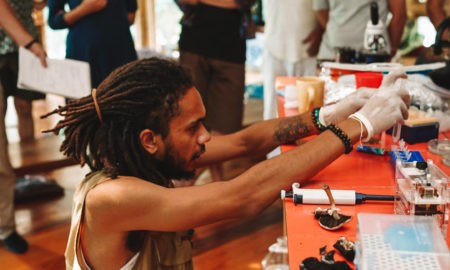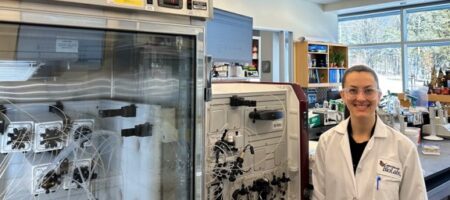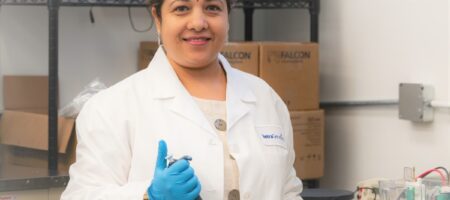Meet a scientist: Dr. Hannah Seidel studies snake genetics
The widespread availability of affordable biotechnology has led to a revolution in citizen science for molecular biology. You can contribute to projects tracking antibiotic resistance in environmental samples, identify the mushrooms growing in your own backyard — or even use DNA to get a better understanding of your pets!
Meet Dr. Hannah Seidel, Associate Professor of Biology at Eastern Michigan University and co-creator of the Ball Python Genetics Project. In her teaching lab, students work together to identify the genetic mutations that underlie python morphs, using shed skin samples contributed by breeders. This work provides insights about python genetics and serves as an incredible resource for python breeders and enthusiasts that seek a deeper understanding of their pets.
How did you decide to start studying python genetics?
I am not a snake breeder and I do not have a pet snake, so this idea did not come from a personal interest in pythons. I was looking for a good model for teaching genetics and collecting new data that could lead to a publication including the students as authors. Pythons are a great model because:
- We can collect real data from them
- Many directly observable traits segregate according a simple Mendelian pattern
- Some of the genetic pathways controlling python color and skin pattern are very well understood and conserved
- It is easy to get DNA through shed skin, which pythons naturally lose every 4-6 weeks

The melanin pathway and ball python morphs. Reduced melanin production results in different coloration. From left to right: wild type, ultramel, lavender albino, and albino. Figure adapted from Brown et al. (2022).
What do we know about python traits like skin color and pattern?
Skin colors and pattern phenotypes in ball pythons are called “morphs”. So far, 11 of these morphs have been characterized genetically. Variation in 6 genes can explain all of these characterized morphs. Skin colors are determined by the chromatophores, or color-producing cells. While mammals have only cells producing melanin, reptiles have 3 types of chromatophores:
- Melanophores (producing pigments)
- Xanthopores (producing pigments)
- Iridiopores (that do not produce pigments, but instead scatter the light by containing crystallized purines)
The 3D position of these chromatophores, as well as the types of pigments produced, determine a python’s morph.
How do you engage students through your study of pythons?
The Ball Python Genetics Project is a research project aimed to study the genetic basis of color morphs in ball pythons. Experiments are performed by undergraduates in a laboratory course at Eastern Michigan University. When I started this project I wanted to create a class for my students so that they could generate data and learn how to work in a lab.
The project started in 2018. Our first objective was to simply obtain DNA from the sheds. We compared different DNA extraction methods and measured DNA yield and quality. Once we established that we were able to extract DNA from ball python sheds, we then asked whether we could amplify specific genes through PCR. The P. regis (Ball python) genome was not available, so we designed primers based on the P. bivittatus (Burmese python) genome, as the two species are very closely related. We successfully performed PCR, and from there we set up a database of sheds and we started investigating the alleles that cause specific morphs.
What has your experience been working with undergrads?
I work with students that do not have much experience in the lab. My class is probably their first or second lab experience. So I implemented many strategies to make sure students get results they can easily interpret. For example, when students extract the DNA and run PCR, the primers are designed so that there will always be a PCR product, no matter the python genotype. This serves as a control to ensure the DNA extraction went well.
With that said, imprecision sometimes can lead to discoveries. When we set up the genetic testing there was a lot of variability between the students; sometimes the PCR was working, sometimes it was not. And I noticed that often the volumes were not as expected. So I repeated the PCRs in my hands, and they never worked. After a bit of troubleshooting, we realized that there were some contaminants from the DNA extraction that were interfering with the PCR, so students that were less precise in pipetting were generally obtaining better results because they were diluting these contaminants. This realization allowed us to optimize the DNA extraction protocol, and the students got a window into the constant troubleshooting that open-ended labwork entails.
What advice would you give to students interested in becoming researchers?
The students I work with who are most successful:
- Choose a project that has multiple paths to success and offers some low-hanging fruits
- Find a research direction that is fulfilling and engage with people
- Set up regular time to catch up with scientific literature











